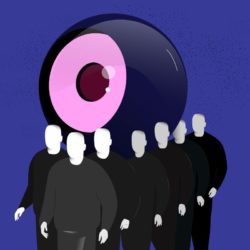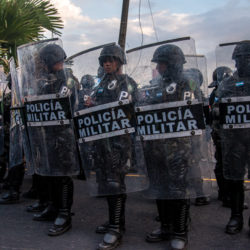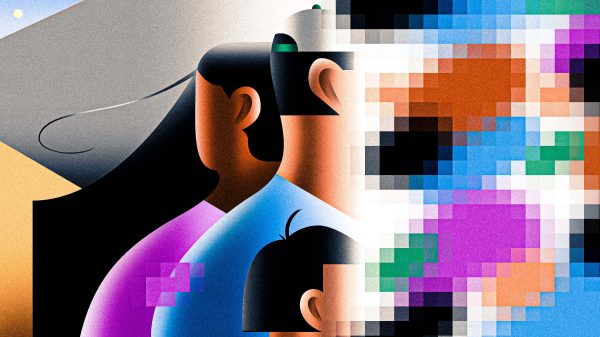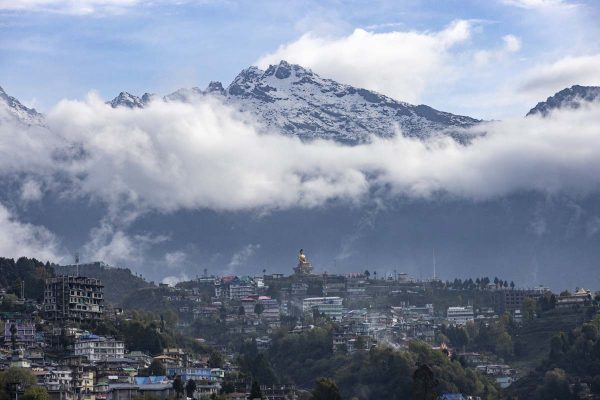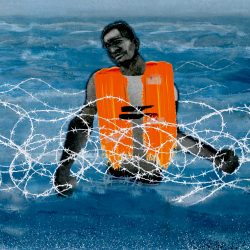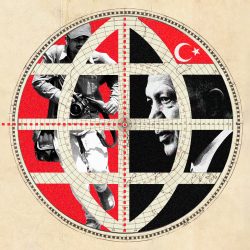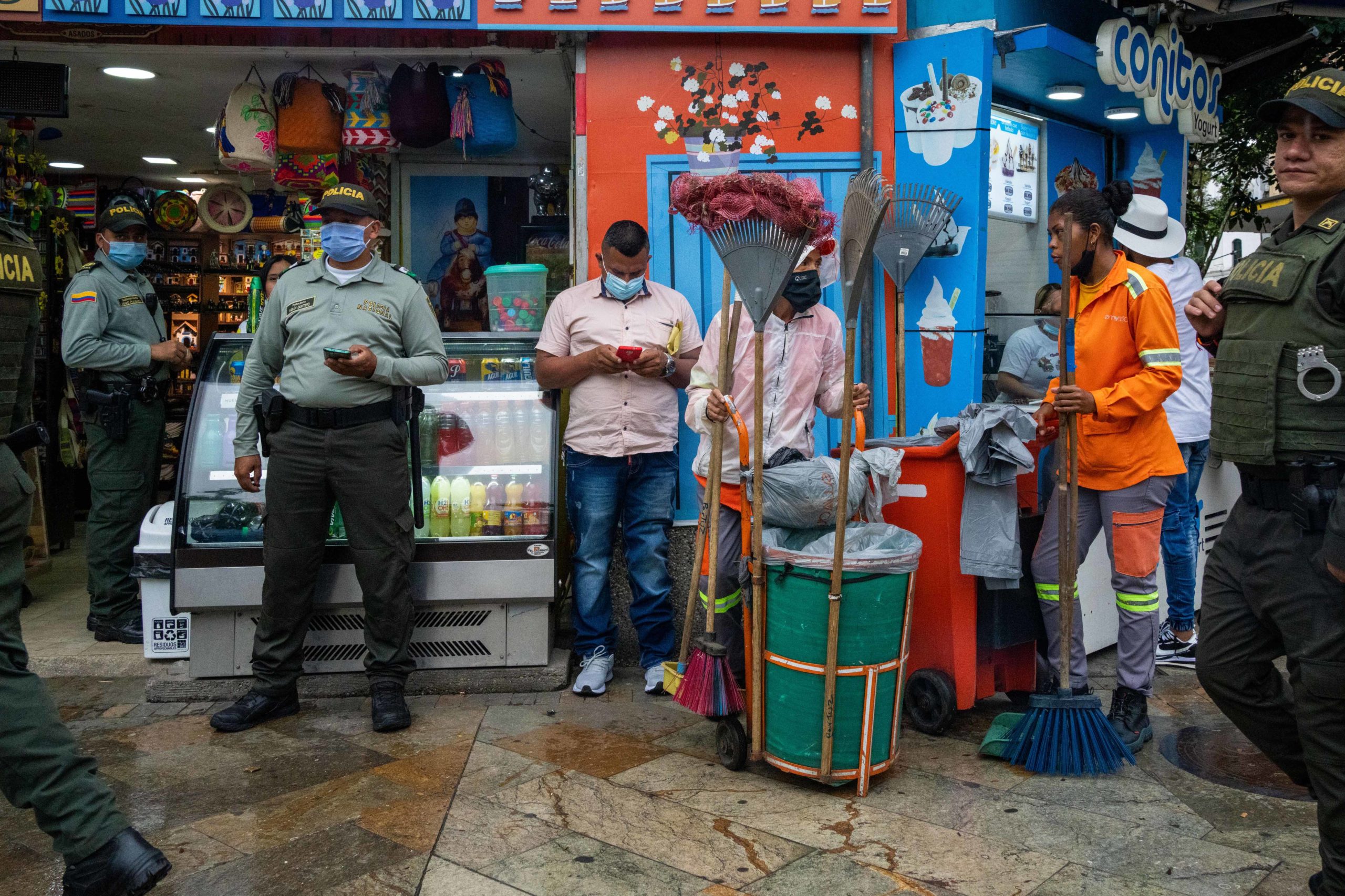
Watching the streets of Medellín
The surveillance cameras of Colombia’s police are no match for the hundreds of “eyes” employed by street gangs
- By Juan David Restrepo Ortiz and Juan Diego Restrepo Echeverri
- Photography by Peter van Agtmael / Magnum Photos
- essay
The sound of a siren broke the stillness of the second night of the new year. A city surveillance helicopter operated by the National Police hovered over the foothills of western Medellín, raking a beam of light over rooftops. Were they after someone? Was there an emergency? The media reported nothing about it. Perhaps it was just a security drill.
Special series
This is the first in a series of multimedia collaborations on the evolving system of surveillance in medium-size cities around the world by photographers at Magnum Photos, data geographers at the Edgelands Institute, an organization that explores how the digitalization of urban security is changing the urban social contract, and journalists and essayists commissioned by Coda Story.
We’ll be bringing you stories from cities around the world, next up: Geneva, Nairobi and Singapore.
The Hawk, as authorities call it, is a U.S.-made Bell 407 and has been flying over Medellín since May 2017. Replete with high-tech features, the helicopter is worth close to $2 million. It is meant to monitor the city from the air, to bring people a sense of security. Residents of the valley where Medellín is nestled greet the Hawk with good humor.
At night, as it passes over areas where hundreds of people congregate to enjoy themselves, the reaction to the Hawk is almost festive: people raise glasses of beer, cigarettes and joints in mock salute. They poke fun at the ineffectiveness of the machine. “From so high up, it’s hard to control what happens on the streets,” some say.
The people who actually watch what happens on the streets also make fun of the Hawk. It is these watchers, not the cops, who are effectively in charge of urban surveillance. With dozens of “eyes” placed in strategic locations, they scrutinize the crowds, particularly around the city center. Their goal is to stop their enemies and the government from harming the businesses they defend, especially the illegal ones.

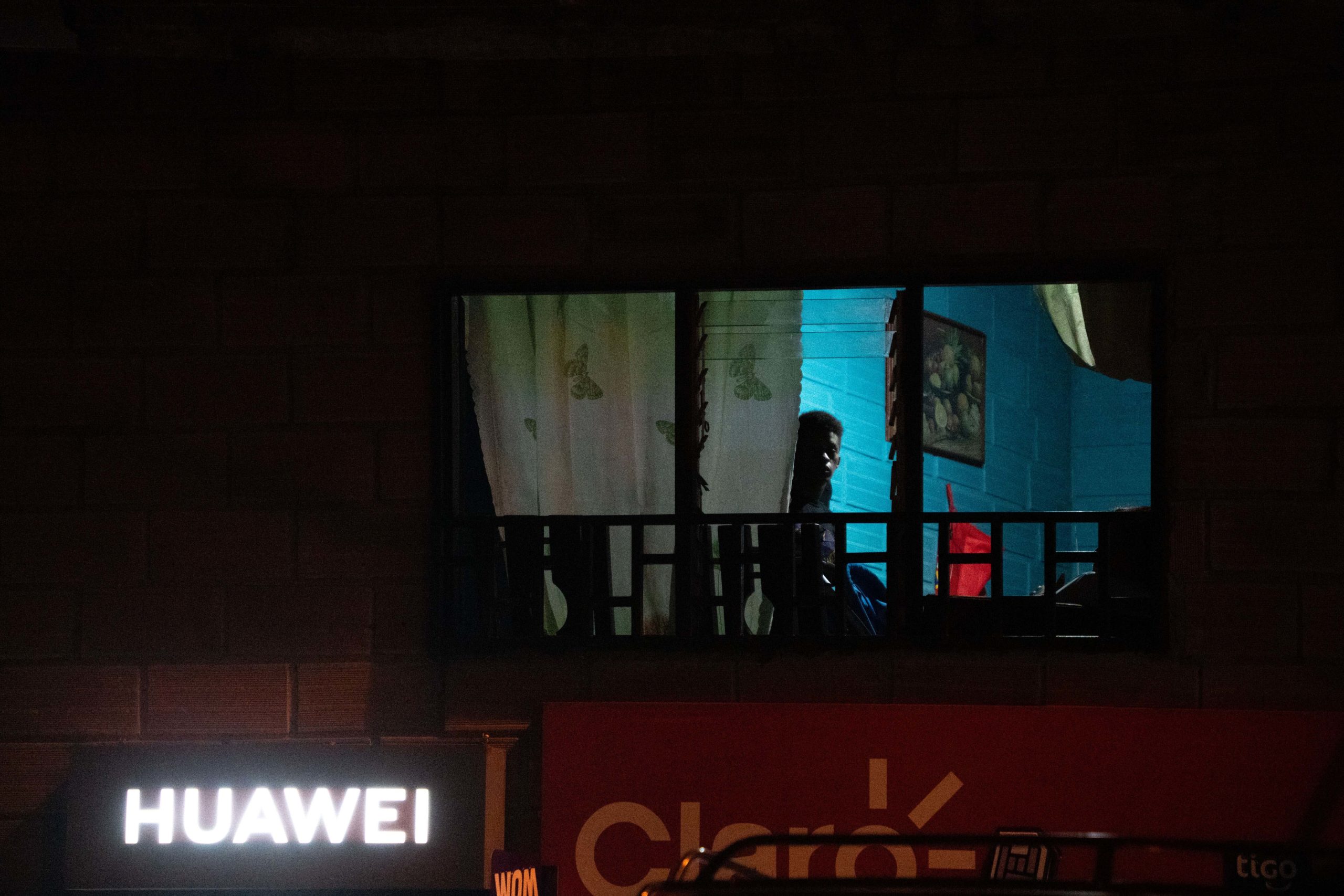

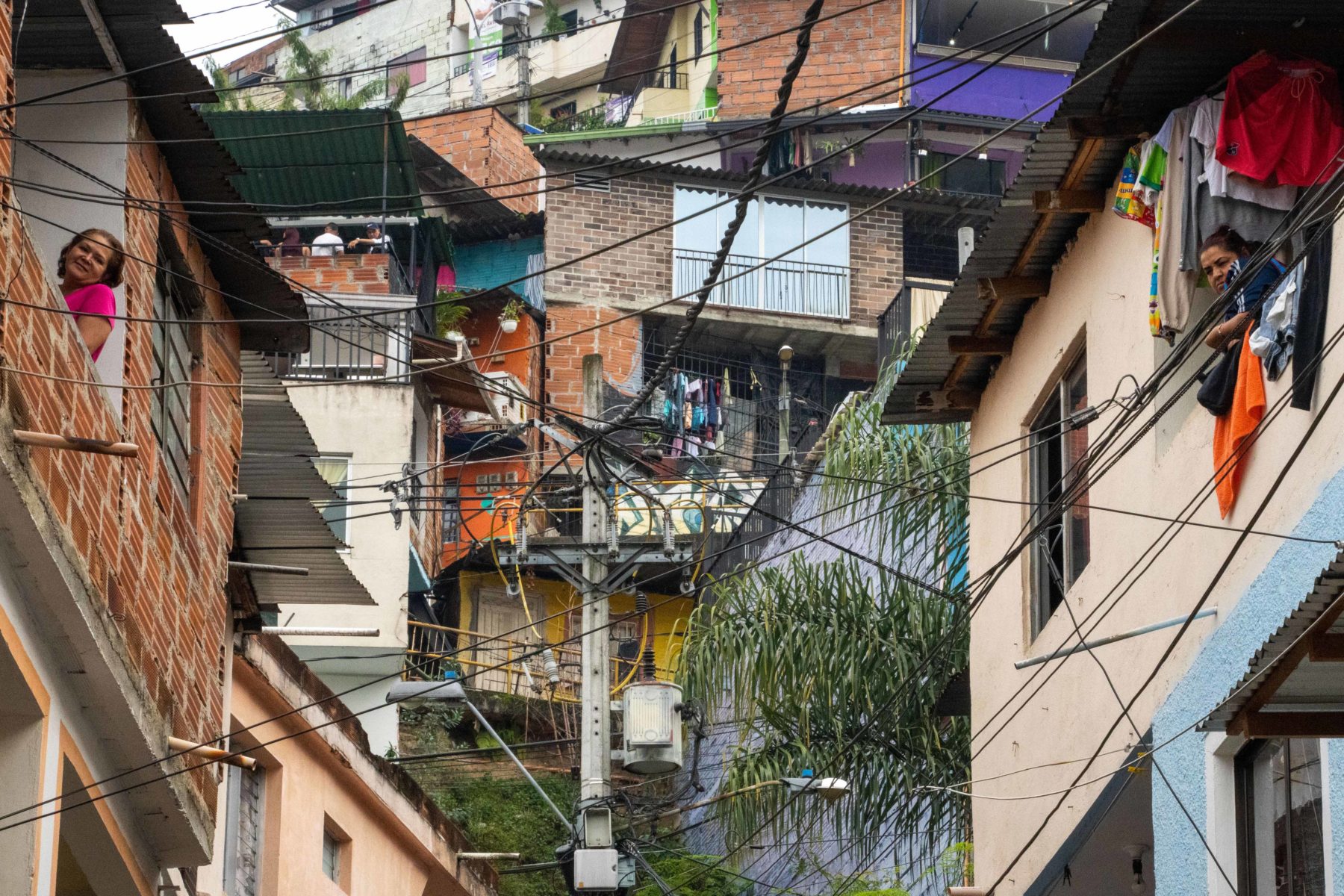
where I felt so constantly under observation," said photographer Peter van Agtmael. "I watched them all watching each other, and became a part of this circle of surveillance."
How many of these watchers are there? It is hard to say. Those who study the phenomenon suspect that hundreds of people, some as young as fifteen, are hired to be the eyes and ears of the organized crime and illegal trade networks that dominate Medellín. Their commanders run lucrative operations: Many sell cocaine, synthetic substances and marijuana. Some smuggle alcohol, clothing, toys, jewelry and household appliances. Others run prostitution rings, even selling sex with underage girls and boys.
Day and night, these youthful eyes observe every person who passes through the areas under gang control. Standing on street corners and protecting their faces with wide-brimmed hats, they watch for suspicious movements and make sure that no one disturbs the order they have imposed. The tension in the air is unmistakable. A simple whistle to get the attention of a friend who has just arrived is cause for reproach.

The police stand idly by, perfectly aware of what is going on under their noses. Many of these officers are bribed to keep mum.
Armed gangs patrol dozens of outlying city neighborhoods, as they have for decades. A culture of organized crime has imposed this order. It has disciplined citizens into tolerating a fairly coercive surveillance system. This even involves restrictions on the movement of people and vehicles when necessary. People moving in and out of these areas are regularly made to pay a small sum to ensure their safety.
“Young people on motorcycles control the area,” says an older resident. "Their justification is that they are protecting us." They monitor people’s movements to ascertain who enters the area and whether they have family or friends. If nobody knows who you are, you can be confronted, thrown out of the neighborhood entirely or even beaten up.
Trucks and vans that supply food to small neighborhood stores are viewed with suspicion. They are seen as a point of vulnerability, a vehicle for possible infiltration by police, or by rival gangs. When trucks come into the neighborhood, the watchers approach and make drivers explain what they’re doing. They too must pay a fee to transit through their streets. Commonly known as a “vacuna” (vaccine), this type of extortion escapes police surveillance. It is rarely reported.
Cell phones have become the main working tool for these armed gangs. Gang leaders lure young men into their criminal enterprise by offering them a motorcycle and a cell phone, often high end, alongside regular pay. Many succumb easily to these offers, seeing no other way to afford such desirable commodities.
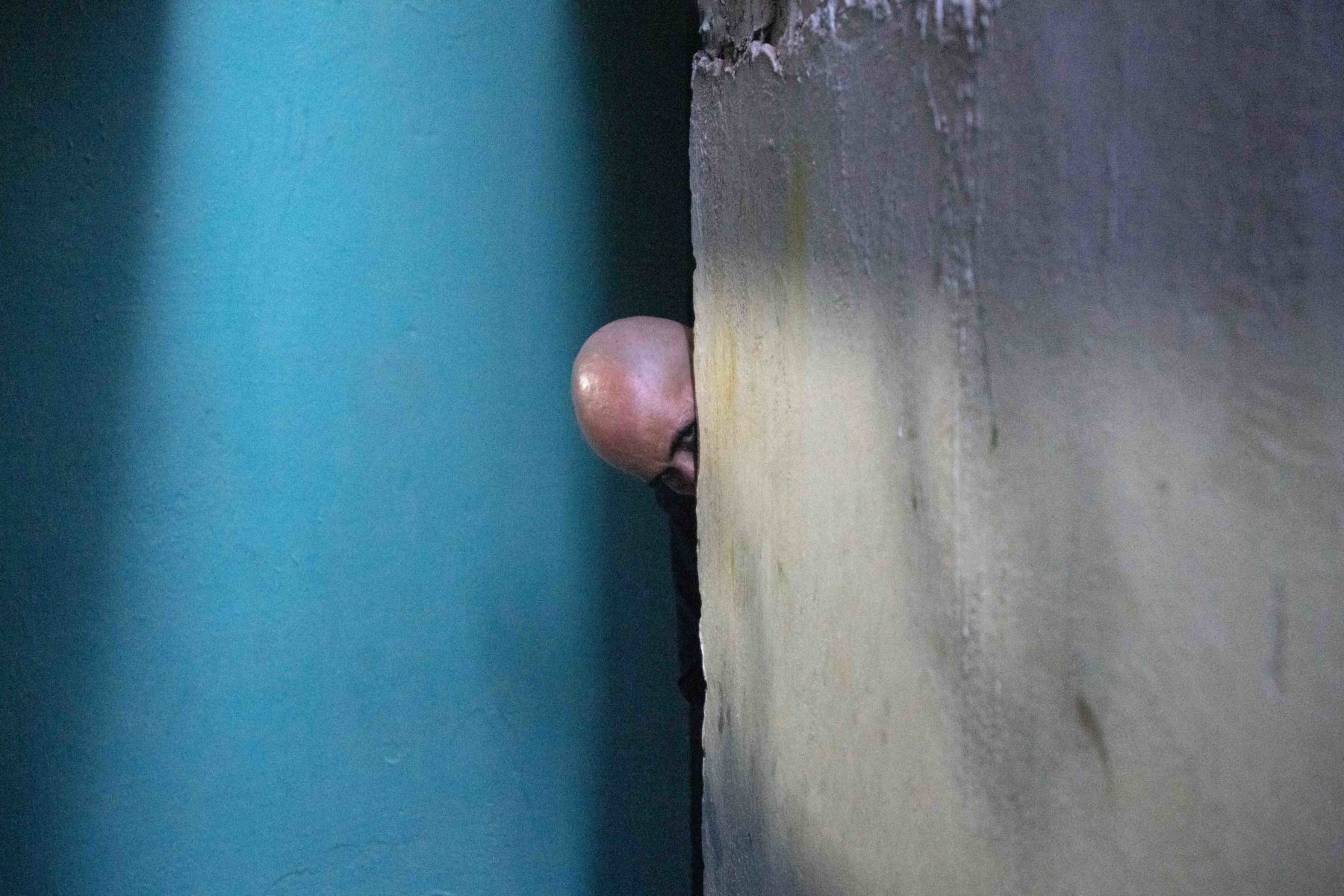

Aside from preventing other gangs from taking over their streets, the watchers also protect the areas where they sell illicit substances, their other source of income. Violence erupts when these controls are breached. One such incident last year in the Robledo area, west of the city, left at least seven people dead.
"Do you know why that happened? Because of a dispute over plazas de vicio (illegal drug dealing places),” says a cab driver who lives nearby. Police personnel and representatives of the Medellín mayor's office echoed this account in statements to the media. Such turf wars are beyond the control of the authorities and are rarely captured by the city’s surveillance cameras.
It begs the question: what about all the cameras in this heavily surveilled city and why do they so rarely record its many deadly gangland battles?
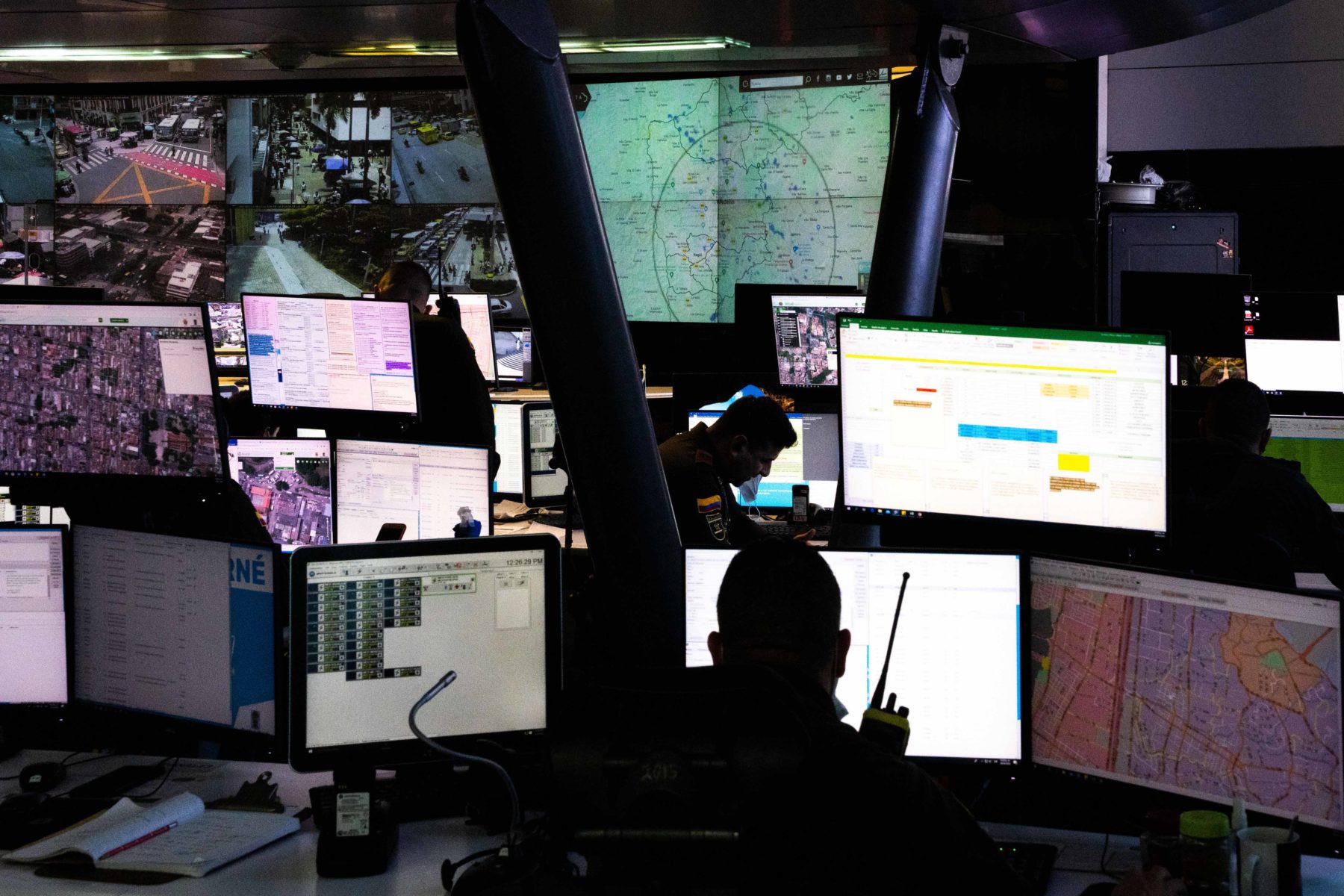

The surveillance cameras that the mayor’s office and the National Police have mounted in various locations around the city are also mocked, much like the Hawk when it makes its nightly rounds over the city. Medellín has more than 2,800 different video devices that are managed through closed-circuit television from a command center.
The majority of Medellín’s security cameras are situated in the city's bustling commercial center, where more than a million people pass through each day.
"Here they charge vacunas to all of us,” says a street vendor. “They charge them to those who sell coffee, to those who sell clothes and to those who sell food."
Another vendor steps in to clarify: "The extortions are considerably more skilled and well-planned now. They even give us bank accounts to pay the money into, which the cameras fail to notice.” He gestures to one of these cameras, next to where he sells cell phone accessories on a wooden cart designed for moving the goods through congested city center streets.
Public space is highly coveted in downtown Medellín. Official figures from the mayor’s office say there are 26,000 street vendors, but the real number is closer to 50,000, all of whom must coexist alongside formal businesses. Street vendors and business owners alike must pay for protection, which generates a high income for criminal groups.
But these “security” fees make up only a small portion of the profits earned by gangs in this congested urban area. The monitoring of the entry of illegal goods coming in from around the world is what fuels a major portion of this illicit economy. Unauthorized imports of toys, cell phones, jewelry, apparel, sneakers, televisions, stereos, cigarettes and alcohol pour into Medellín and are distributed to vendors in the city center. “These commodities arrive in trucks between Thursday and Sunday night, are unloaded in under 15 minutes, and are housed in various facilities,” says a person familiar with the routine. Criminal organizations have put in place a robust security system to guard against their seizure or theft.
Some say that the police surveillance cameras nearest to the loading sites are either “broken or deliberately switched off.” There is much in Medellín that the cameras do not see — the activities in the so-called “Barrio Antioquía,” for instance, on any given night. The neighborhood is one of the most surveilled in the city and located less than three miles from the city center.

A tourist from Madrid approaches a cab on the edge of a park in El Poblado, the commercial heart of Medellín’s upper class. “Can you take me to the neighborhood?” he asks. The driver briefly assesses the situation and then, with a nod, signals to the tourist to get into the back of the car.
After a roughly ten-minute journey, the vehicle reaches Barrio Antioquía, where, for more than forty years, large volumes of drugs have been distributed and sold. Here, there are eyes everywhere. The cab turns into the neighborhood and then down a winding street with dilapidated homes on either side before coming to a corner where a group of young people are huddled together. They wear baggy jeans, Oakley t-shirts, brand-name sneakers, hats and dark sunglasses. Fanny packs are strapped around their chests. This is where the merchandise is stored. They talk casually among each other and occasionally scan the streets for anyone who might be looking for what they have to offer. One of them spots the taxi. Without hesitation, he walks up to the car. “What’s up man, what are you looking for?” Without getting out of the cab, the tourist asks for 50,000 COP (about $11) worth of cocaine. This buys him about five grams of “escama de pez” (fish scale), one of the purest forms of cocaine in the streets. The dealer looks in his fanny pack, locates the little baggies of white powder and hands them through the car window, in exchange for the money. The cab pulls away and rolls back to El Poblado.
This type of business is conducted day and night. A source tells me that 72 people, most of them quite young, are employed as campaneros (vigilante watchmen) to keep a 24-hour vigil, to make sure that nothing interrupts or affects the brisk sales. The campaneros are why tourists, and local residents, can hop into a cab, buy illegal drugs without getting out of the vehicle, and leave the neighborhood as quickly as they came.

Barrio Antioquía emerged in the mid-twentieth century to house mainly local industrial workers. By the 1960s, it became the main market for contraband cigarettes. Later, the sale of marijuana, cocaine, and other drugs began with the backing of Pablo Escobar’s Medellín Cartel. Over the years, it consolidated as an area controlled by gangsters.
The neighborhood is not blighted or bleak. It has good access roads, strong commercial and industrial activity and is next to the Enrique Olaya Herrera airport. And it has an international reputation among drug users. The authorities can do little.
Subscribe to our Authoritarian Tech newsletter
From biometrics to surveillance — when people in power abuse technology, the rest of us suffer. Written by Ellery Biddle.
Surveillance cameras once promised a brave new world of policing neighborhoods like Barrio Antioquía. If surveillance footage is used to arrest a dealer, police boast about the effectiveness of cameras. But the gangs operating in the barrio have destroyed and replaced official surveillance networks with their own CCTV cameras. “Barrio Antioquía is the most protected place in Medellín,” says an insider in the area. “For criminals, it is the city’s crown jewel.”
But they couldn’t have taken over the neighborhood without cooperation from police. This was always suspected, but then it was proven, when 22 police officers were detained in December 2020 for their links with drug traffickers operating across Barrio Antioquía.
For several years, two illegal activities have been ring fenced from scrutiny and investigation. The first was the storage of illegal substances in warehouses and houses with armored doors. The second was the crystallization of coca base into cocaine hydrochloride. In addition to the laboratories installed in rural areas near the city, for at least six years there have been laboratories operating in urban areas. An expert told me that one of these labs was located just outside of Barrio Antioquía.
Local authorities say they want to put an end to these problems that have persisted for decades. The city has invested $2.6 million dollars in the construction of a modern police station in Barrio Antioquía. Construction began in January 2021, and is nearing completion on a four-story building sitting on 43,100 square feet of land. The objective is to strengthen security and counteract micro-trafficking in the neighborhood.
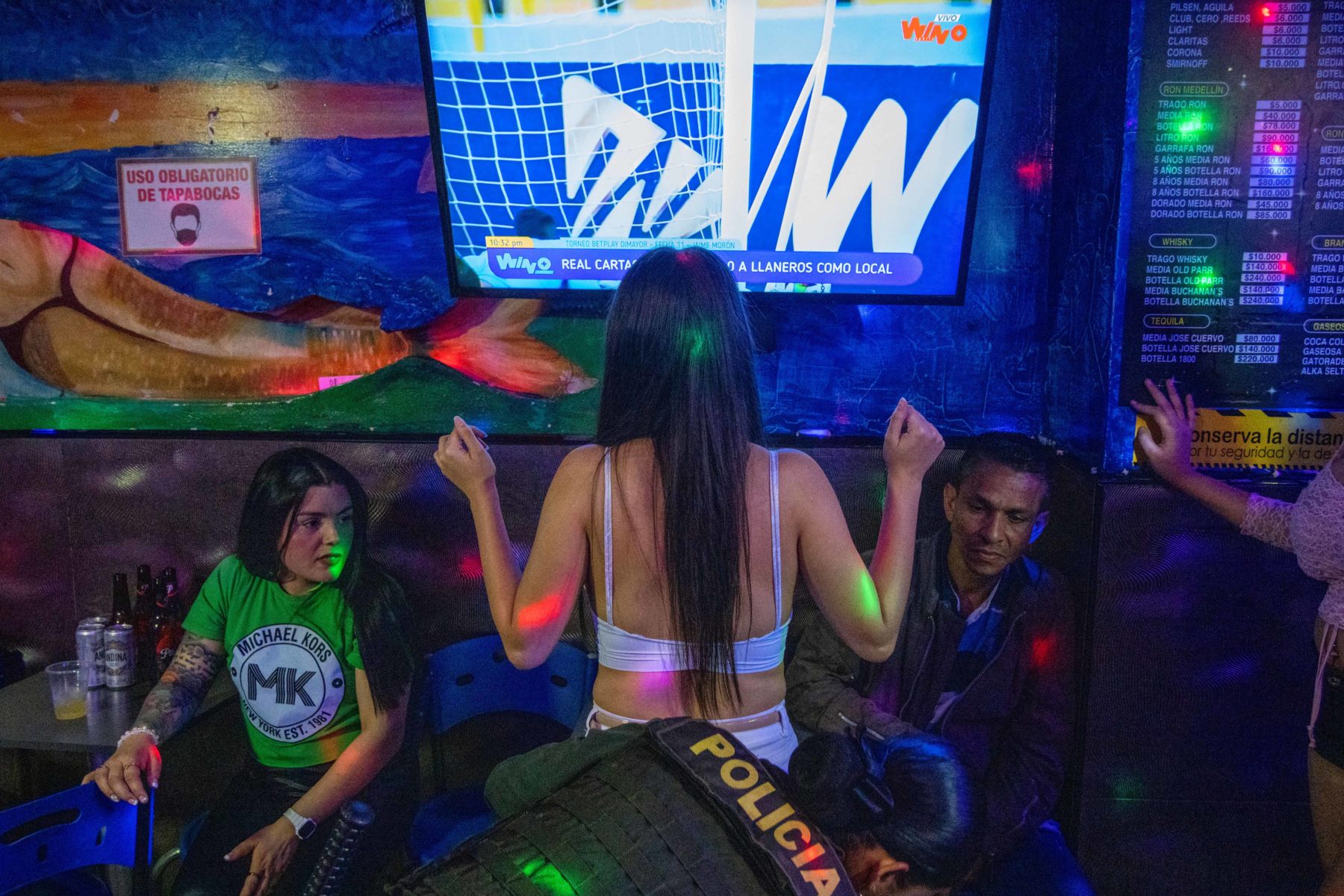
Police, with or without imposing new buildings, have their work cut out for them in Medellín. It is a city in which the illegal economy has been consecrated in the blood and fire of generations of criminals.
Related stories
-

How surveillance tech helped protect power — and the drug trade — in Honduras
Anna-Catherine Brigida
-

Between the US and Mexico, a corridor of surveillance becomes lethal
Erica Hellerstein
-

‘I felt like I was a prisoner’: The rapid rise of US immigration authorities’ electronic surveillance programs
Erica Hellerstein
The system is vast and sophisticated. And its footsoldiers, its building blocks are the watchers on the streets who keep tabs on everything so that the flow of business, in drugs, prostitution and contraband, is unhindered. The constant surveillance is also key to the control criminal gangs exert over the general population. In each of Medellíns 249 neighborhoods, there are 72 people hired by gangs to keep watch, not counting those monitoring the illegal CCTV cameras.
Despite large investments in technology, the authorities have not yet managed to dismantle these criminal organizations or disrupt their influence. Although there are flurries of police activity from time to time and arrests made, eventually and inevitably it’s not long before the gangs are back and doing business as usual.
Local authorities boast of having a modern digital security apparatus with hundreds of surveillance cameras and the Hawk up in the sky as a noisy reminder that the city is being watched. But the gangs’ eyes on the streets see more than cameras, drones and helicopters do.
These watchers are closer to reality and are more agile in how they respond. As one expert sardonically told me, surveillance networks see only what those who control the networks want to see. “When the pay is good,” he says, referring to corruption, “everyone looks the same way.”
The story you just read is a small piece of a complex and an ever-changing storyline that Coda covers relentlessly and with singular focus. But we can’t do it without your help. Show your support for journalism that stays on the story by becoming a member today. Coda Story is a 501(c)3 U.S. non-profit. Your contribution to Coda Story is tax deductible.
The Big Idea
Shifting Borders
-

When your body becomes the border
feature Erica Hellerstein
-

India and China draw a line in the snow
feature Shougat Dasgupta
-

How an EU-funded agency is working to keep migrants from reaching Europe
feature Zach Campbell and Lorenzo D'Agostino
-

Turkey uses journalists to silence critics in exile
feature Frankie Vetch
